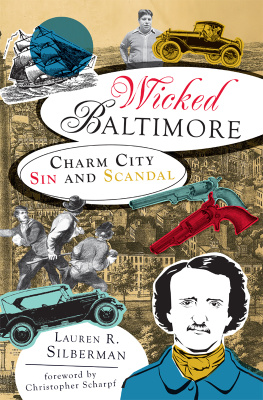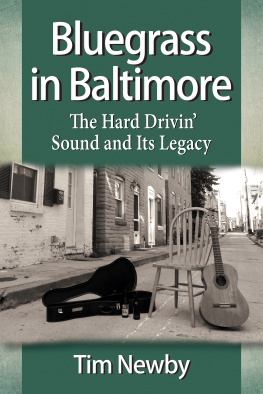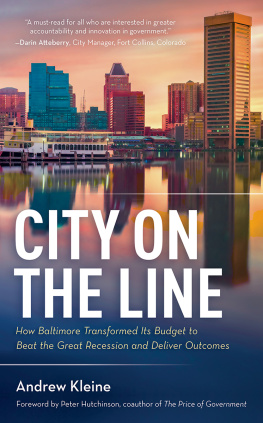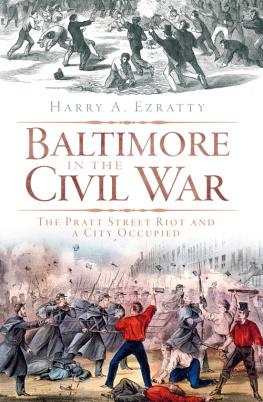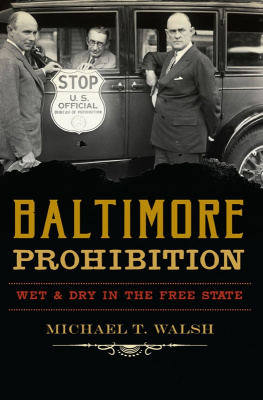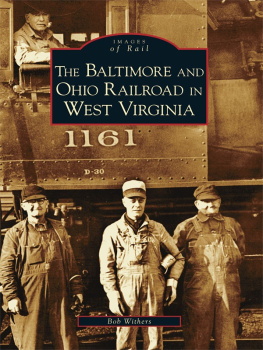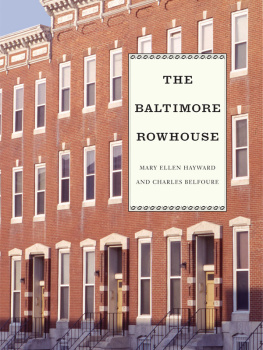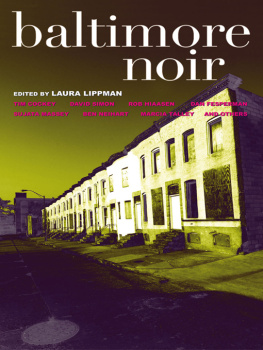

Published by The History Press
Charleston, SC 29403
www.historypress.net
Copyright 2011 by Lauren R. Silberman
All rights reserved
Cover images: The city of Baltimore City, Maryland, in 1880view from the Washington Monument looking south. A. Sachse & Co. Lithographers & Printers. Courtesy of the Library of Congress; Portrait of Billie Holiday and Mister, Downbeat, New York, New York, circa February 1947. Courtesy of the William P. Gottlieb Collection, Library of Congress; Baltimore, Maryland Burlesque barker, by Marjory Collins, 1943. Farm Security Administration/Office of War Information Photograph Collection, Library of Congress.
First published 2011
e-book edition 2012
ISBN 978.1.61423.269.8
Library of Congress CIP data applied for.
Notice: The information in this book is true and complete to the best of our knowledge. It is offered without guarantee on the part of the author or The History Press. The author and The History Press disclaim all liability in connection with the use of this book.
All rights reserved. No part of this book may be reproduced or transmitted in any form whatsoever without prior written permission from the publisher except in the case of brief quotations embodied in critical articles and reviews.
Contents
Foreword
Baltimorbid
Long before If it bleeds, it leads became the journalistic credo of local TV news, a young, starving Baltimore poet learned pretty much the same lesson.
In the early 1830s, grave robbers were stealing teeth from corpses and selling them to dentists. The Baltimore papers reveled in the gory details. The more sensational the coverage, the more copies they sold.
Inspired by the gruesome newsand the publics appetite for itour starving poet wondered if he could eke out a living applying his talent to more shocking subject matter. He penned a tale called Berenice, about a guy obsessed with his cousins teeth. After the cousin dies, the protagonist grabs some dental instruments, digs up her grave and yanks out her pearly whitesonly to discover that she isnt quite dead.
The story was Edgar Allan Poes first big hit as a writer; its success encouraged him to make tales of the grotesque and arabesque the financial mainstay of his literary career.
It is grisly historical anecdotes such as thisand other dark, lurid events chronicled in Wicked Baltimorethat give the Charm City a macabre kind of charm. Sure, I love the Inner Harbor, Fort McHenry and Camden Yards, but my telltale heart belongs to the morbid underbelly of Baltimores history. Which makes my favorite attraction the old Western Burying Groundnow the Westminster Hall and Burying Groundat Fayette and Greene Streets.
Established in 1786, Westminster is Baltimores creepiest graveyard. Its ornate crypts and mausoleums reflect an early nineteenth-century fascination with Egyptology, reincarnation, premature burial and life after death. In 1852, a somber Gothic-style church was built on brick archways directly above the center portion of the graveyard, creating spooky catacombs in the basement. And Westminster Burying Ground is where the paths of two prominent figures in Baltimorbid intersect: Poe and a medical school janitor named Frank.
Edgar Allan Poe came from a Baltimore family and lived here from 1831 to 1835. His grandfather owned a burial plot near the back of the old Western Burying Ground, and Poe likely was in attendance when his tubercular brother, William Henry, was interred there in 1831. Poe joined him in 1849.
Poes remains havent remained still. In 1875, he was exhumed from his original unmarked grave and reburied not once, but twice, to make room for the large marble-and-granite memorial that now stands at the graveyards northwest gate. If you think the supermarket tabloids go too far, check out what the Baltimore Sun wrote in 1875:
Nothing remained inside the coffin but the skeleton, all the flesh and grave clothes having long since returned to dust. Some hair yet attached to the skull, and the teeth, which appeared to be white and perfect, were shaken out of the jaws and lay at the bottom of the coffin.
Poes postmortem maneuverings led to wild conjecture that the gravediggers got the wrong body, which I debunked in a 2006 paper published by the Edgar Allan Poe Society of Baltimore. (See Ms. Silbermans chapter on Poe for more on his mysterious death and equally mysterious afterlife.)
I hate to admit it, but the possibility that grave robbers got to Poes body shortly after it was buried cannot be ruled out. As demonstrated by the news story that served as a key source for Berenice, grave robbing was a fact of life back then. It was especially big in Baltimore, where, according to one report, there was a regular organization for the despoiling of graves. No grave, no matter how sacred or how greatly reverenced, was safe from these ravages.
Most body snatchers worked in secret. After all, plundering graves to supply cadavers for medical schools was a public relations no-no for the sponsoring institutions, not to mention a serious crime. But one practitioner achieved a certain amount of professional fame in his day. His first name (we dont know his last name) was Frank.
Frank worked two blocks south of the Western Burying Ground, at the University of Maryland School of Medicines Davidge Hall, during the early 1800s. He was the schools full-time janitor and part-time resurrection or sack em up man,in other words, the resident body snatcher. (If he were working today, Frank might more accurately be termed a covert interred remains retrieval technician.)
We know of Franks existence through two letters written by a University of Maryland professor of surgery, Dr. Nathan Ryno Smith. In one letter, Dr. Smith bragged about Franks skills. A better one never lifted a spade, he wrote. Indeed, Frank must have been very good, for in an 1828 student recruitment catalogue, the University of Maryland described itself as the Paris of America, where the subjects are in great abundance.
Apparently, bodies were in such great abundance that the university sold its surplus to other medical schools. Writing to a physician at Bowdoin College in Maine, Dr. Smith planned to send three cadavers pickled in whiskey: I suppose they will require about half a barrel each, of whiskey; this at 35 cents a gallon, will be $16.80. The barrels a dollar each; the subjects, the putting up, etc., $10 each, making in all $50. After the medical school students unpacked the cadavers, they drank the whiskey. (Is that how rotgut whiskey got its name?)
This rather casual attitude about the illegal seizure and trafficking of human cadavers belies the fact that most professors and students were generally quite worried about how much the public knew of their doings. Baltimore was nicknamed Mobtown, and mobs frequently gathered outside Davidge Hall and demonstrated against the dissections. In 1831, Dr. Smith wrote that Frank had been greatly alarmed and fearful for his own personal safety and was not able to procure me a sufficient number of subjects for my demonstration.
Considering how prevalent body snatching was in Baltimore, Im surprised Poe never used it as the basis for a story. Poe was a master at taking real events and shaping them into his own fiction. Take, for example, The Premature Burial. Being buried alive was not something Poe made up. It actually happened. The papers were filled with storiesreal or imaginedof people getting closed up in their coffins because they had the semblance of death. It was a common fear, and Poe merely exploited that fear for his story. The closest he came to writing about body snatching was in a minor tale called Loss of Breath, also written in Baltimore, in which a conscious but catatonic man is dissected by a surgeon. Why Poe never wrote about grave robbing, I cannot say. Maybe body snatching was too pedestrian, an unpleasant fact of urban lifethe nineteenth-century equivalent of getting ones car stolen. Or maybe, since the victims were already dead, it just didnt have that same element of fear of, say, premature burial. Youd think Poe could have written something really scary on the subject, but he didnt.
Next page
